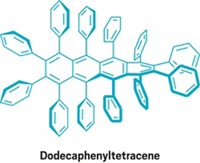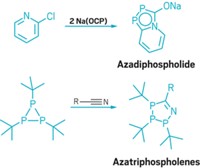Advertisement
Grab your lab coat. Let's get started
Welcome!
Welcome!
Create an account below to get 6 C&EN articles per month, receive newsletters and more - all free.
It seems this is your first time logging in online. Please enter the following information to continue.
As an ACS member you automatically get access to this site. All we need is few more details to create your reading experience.
Not you? Sign in with a different account.
Not you? Sign in with a different account.
ERROR 1
ERROR 1
ERROR 2
ERROR 2
ERROR 2
ERROR 2
ERROR 2
Password and Confirm password must match.
If you have an ACS member number, please enter it here so we can link this account to your membership. (optional)
ERROR 2
ACS values your privacy. By submitting your information, you are gaining access to C&EN and subscribing to our weekly newsletter. We use the information you provide to make your reading experience better, and we will never sell your data to third party members.
Materials
Building A Bigger Borazine
Separating boron and nitrogen atoms with phenyl groups leads to a conjugated macrocyclic version of optoelectronic compounds
by Stephen K. Ritter
July 23, 2012
| A version of this story appeared in
Volume 90, Issue 30
Using a modular synthesis, chemists have prepared the first example of a macrocyclic borazine (Angew. Chem. Int. Ed., DOI: 10.1002/anie.201203788). Borazine is a six-membered ring compound with alternating electron-accepting boron atoms and electron-donating nitrogen atoms—an inorganic benzene analog. Chemists are interested in borazines for their hydrogen storage capability and their electronic and optical properties such as strong fluorescence. The latter attributes enable the molecules to be used as anion-recognition sensors and as organic electronic materials. Pangkuan Chen, Roger A. Lalancette, and Frieder Jäkle of Rutgers University have now taken borazines to a new level by inserting phenyl groups between the boron and nitrogen atoms to expand the ring size. The researchers built the bigger borazine modularly via coupling reactions involving silylated and stannylated triphenylamines, boron tribromide, and triisopropylphenylcopper. The expanded borazine has “opened doors to a new family of macrocycles whose optoelectronic properties can be tuned by the choice of acceptor-donor building blocks and potentially by ring size,” says Shih-Yuan Liu, whose group at the University of Oregon synthesizes related boron-nitrogen heterocycles.





Join the conversation
Contact the reporter
Submit a Letter to the Editor for publication
Engage with us on Twitter